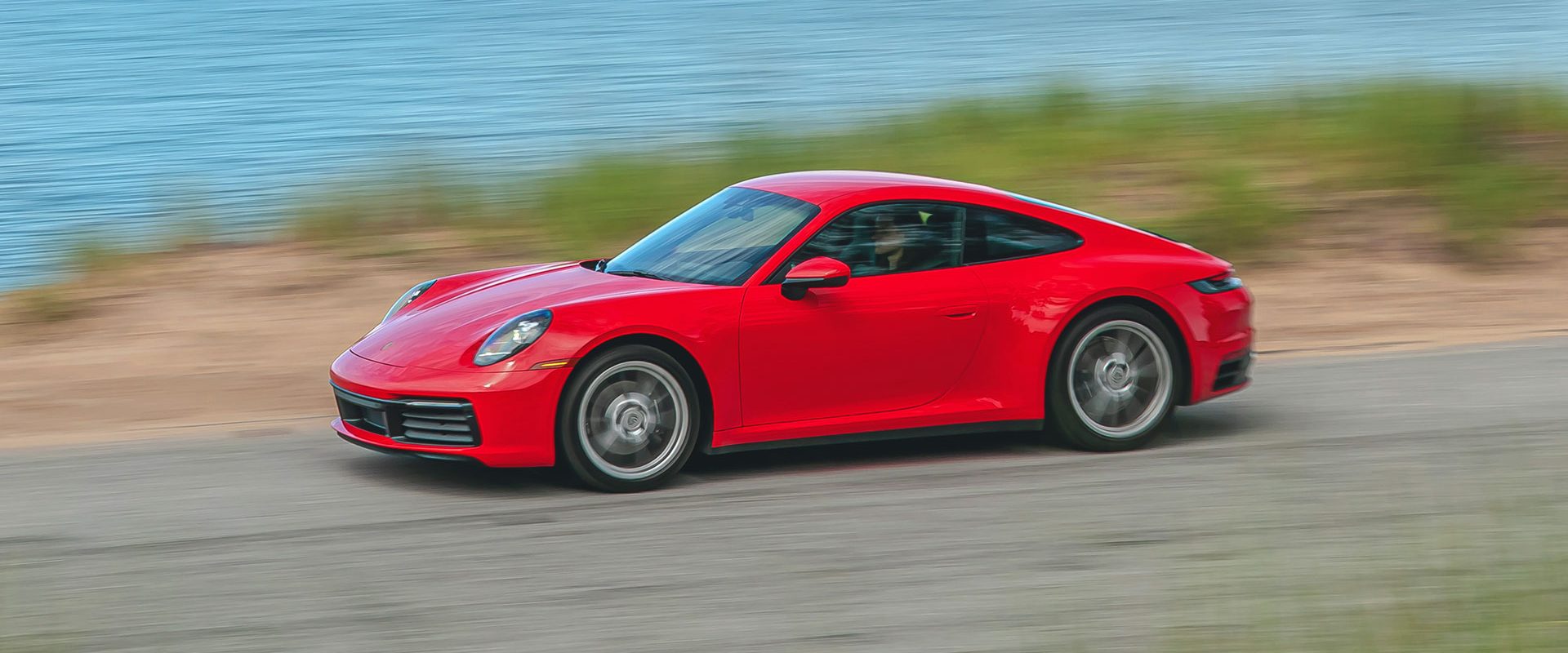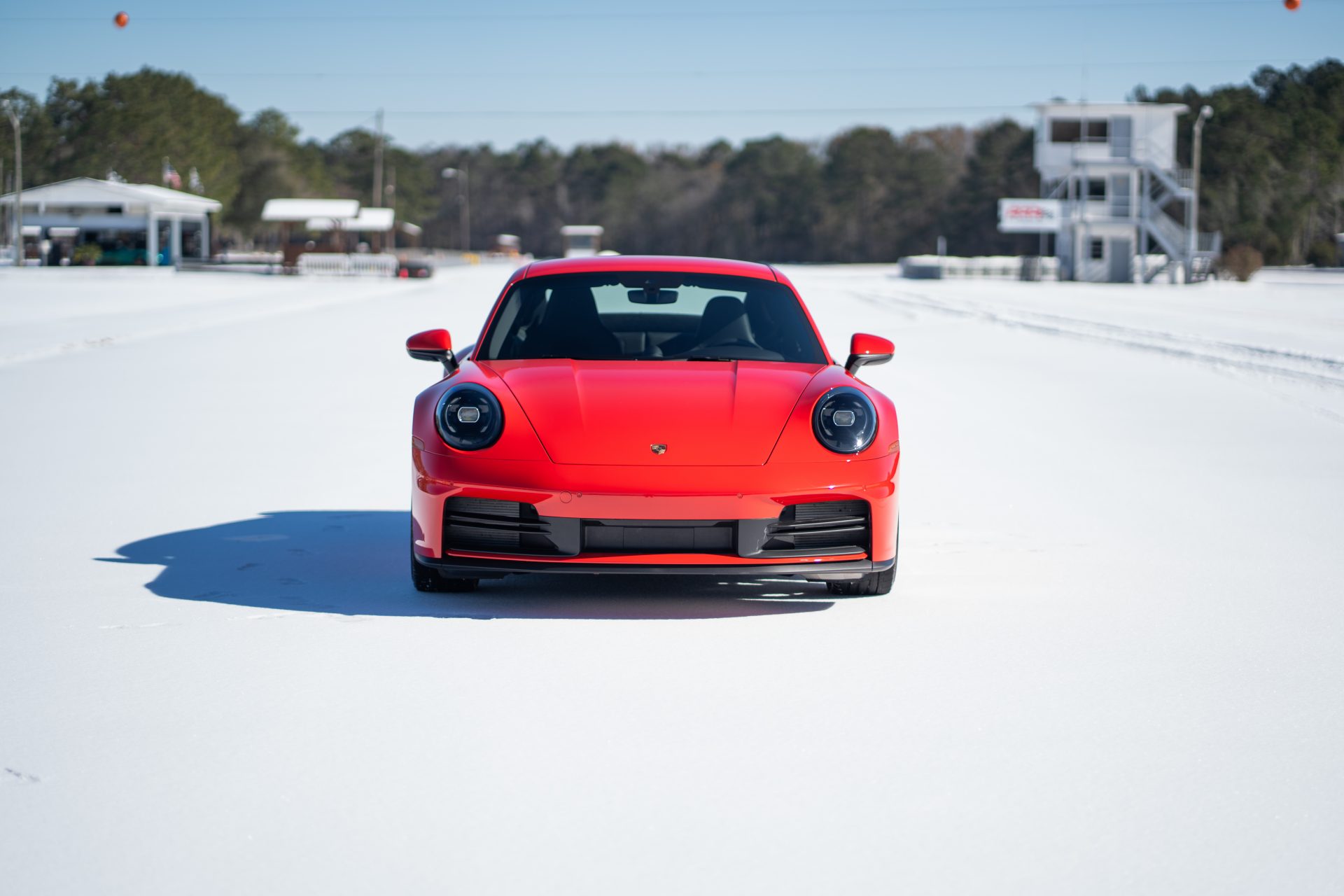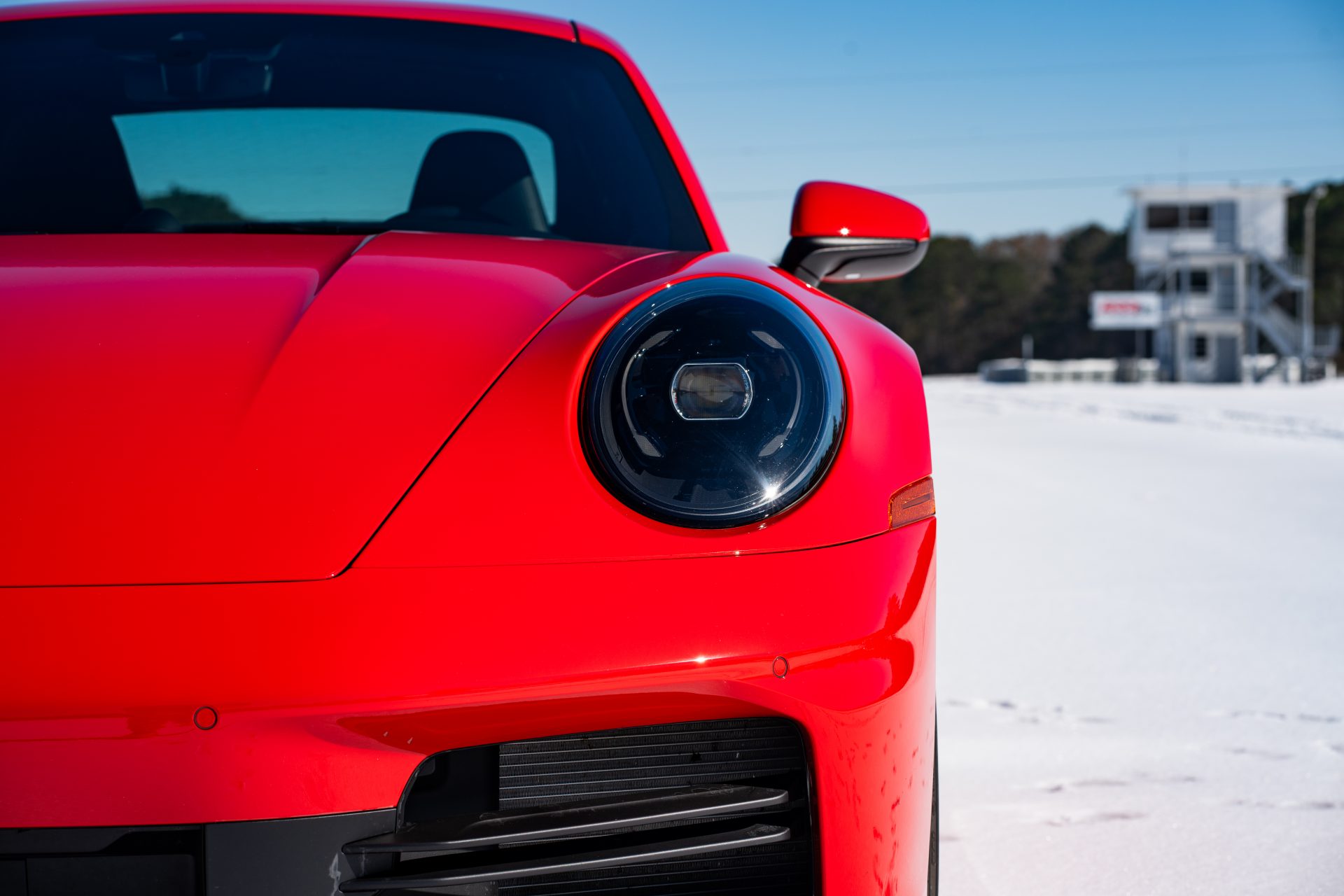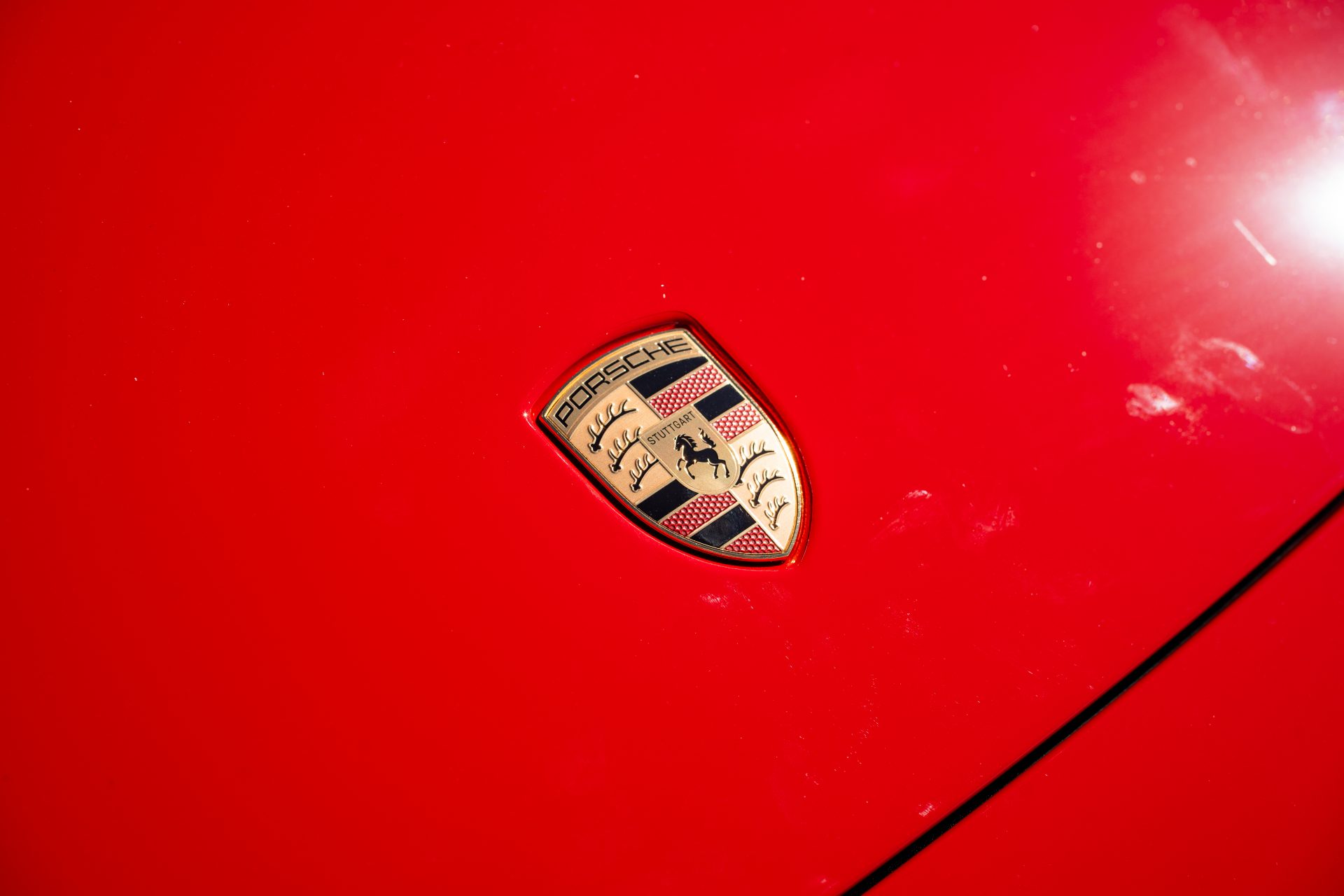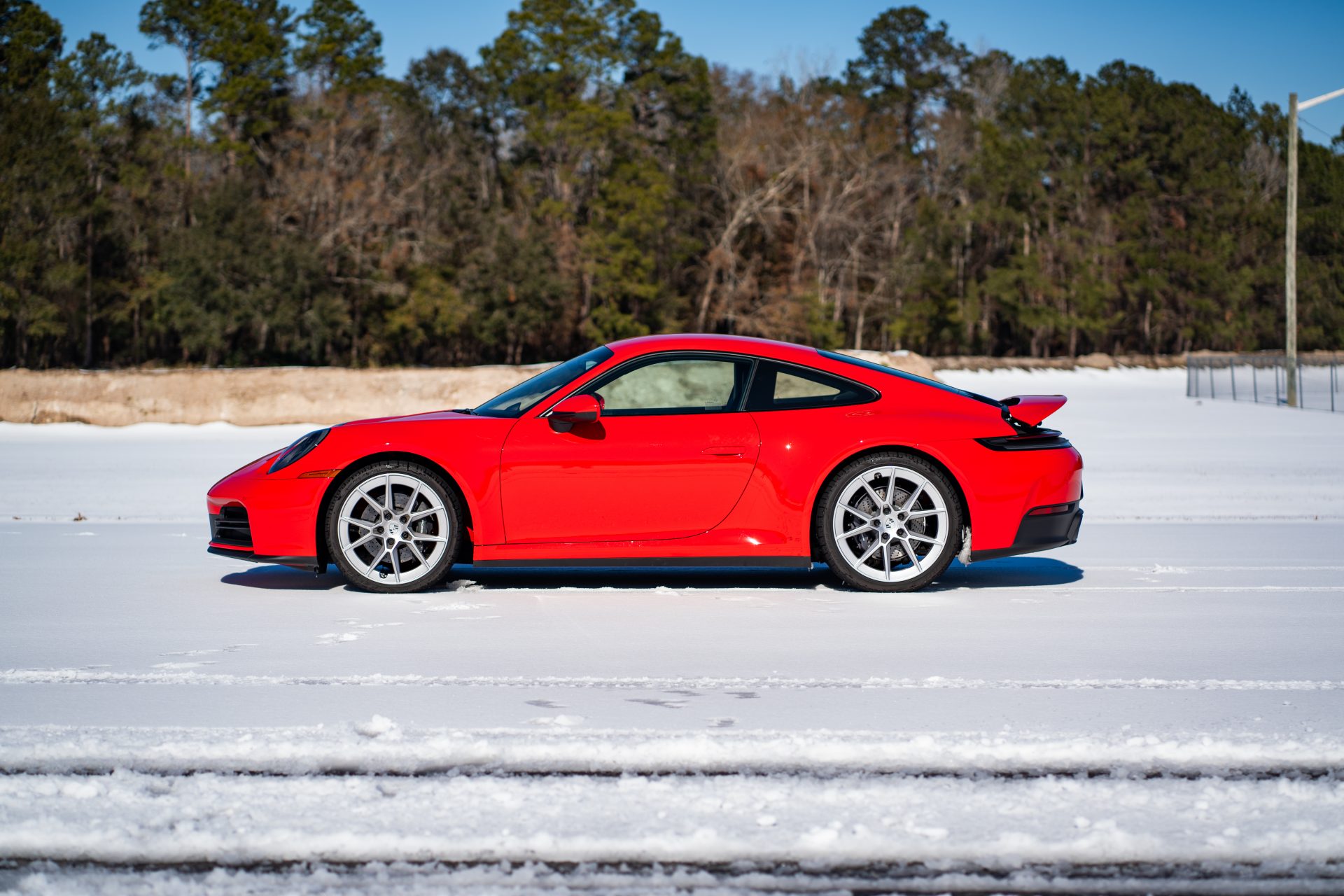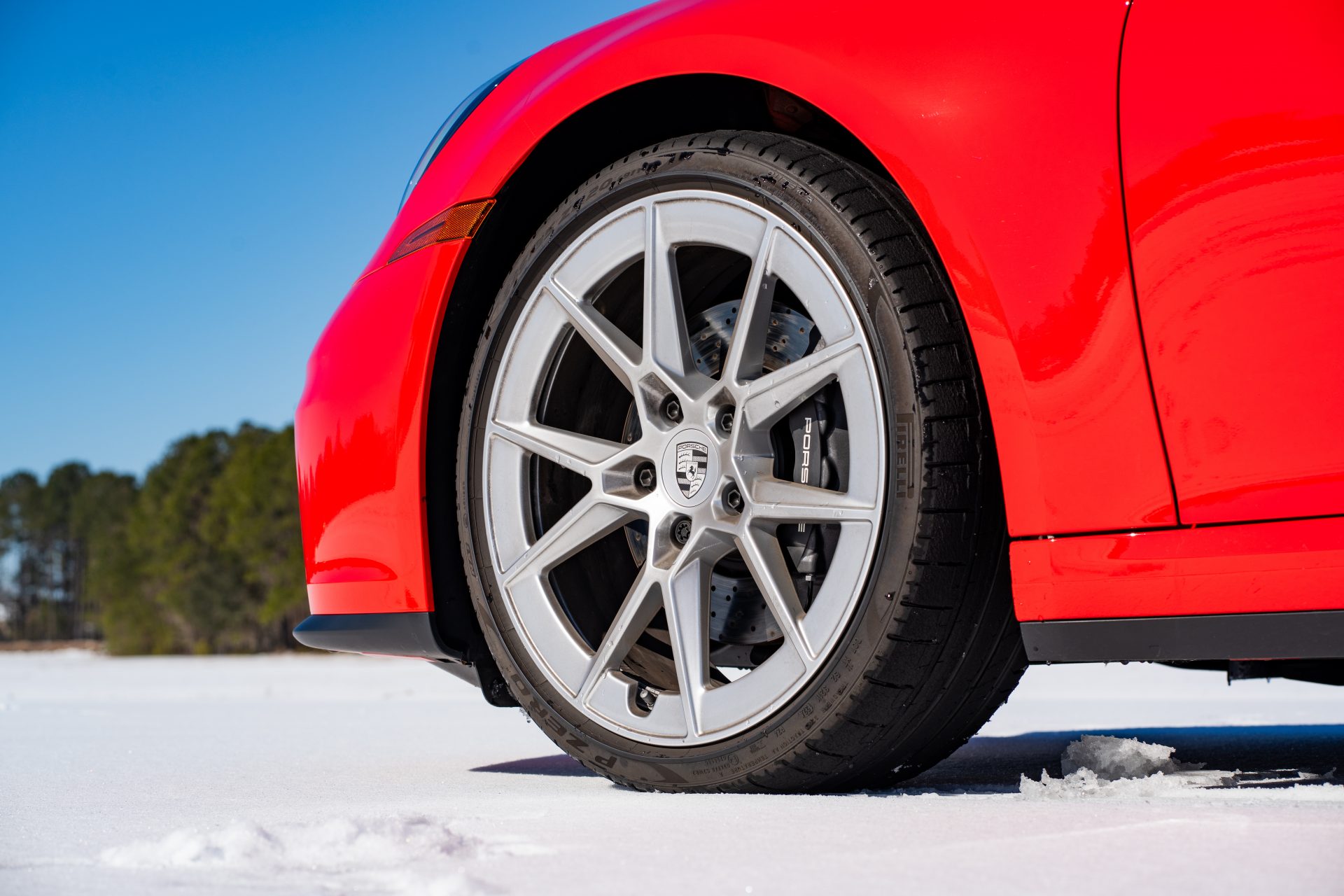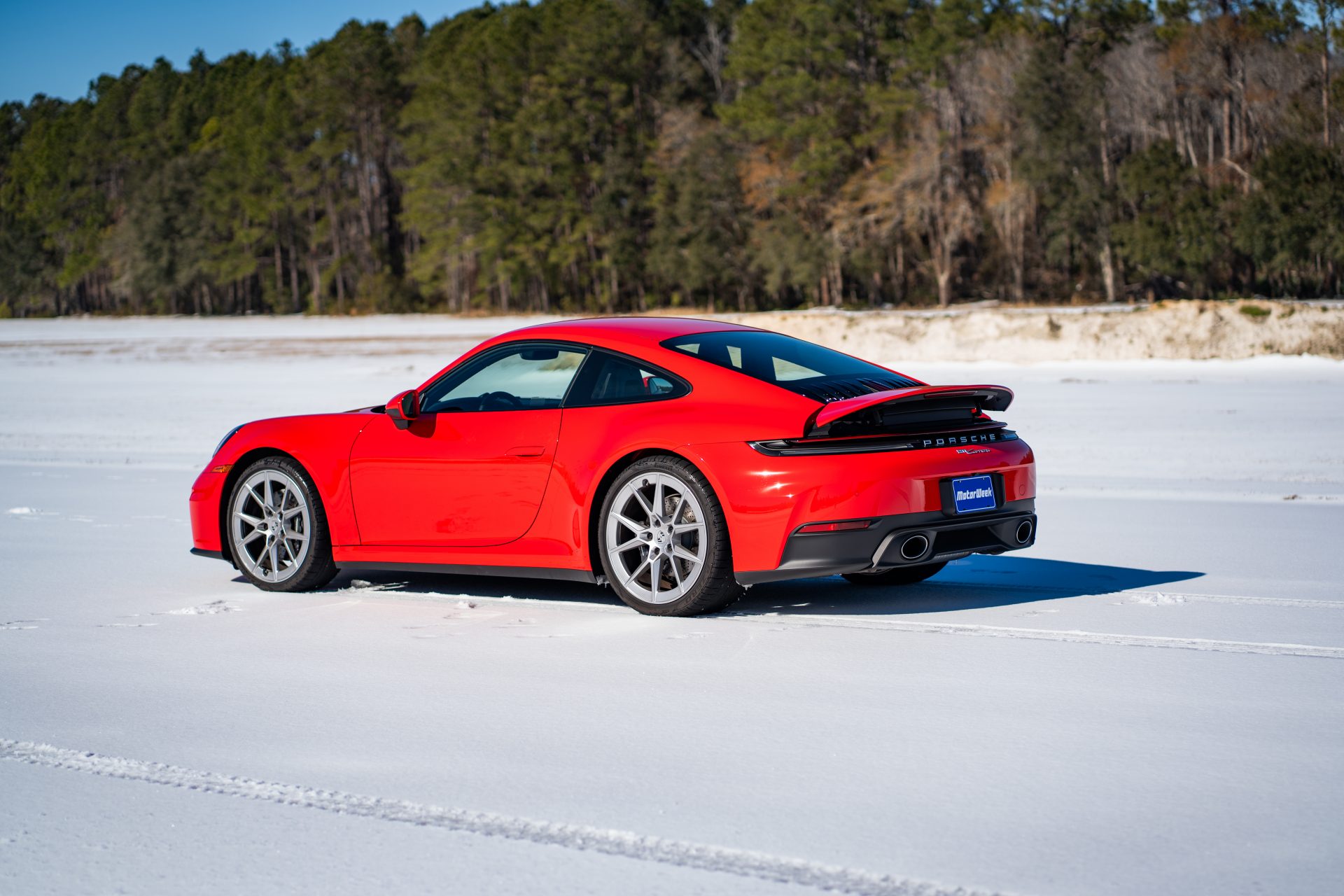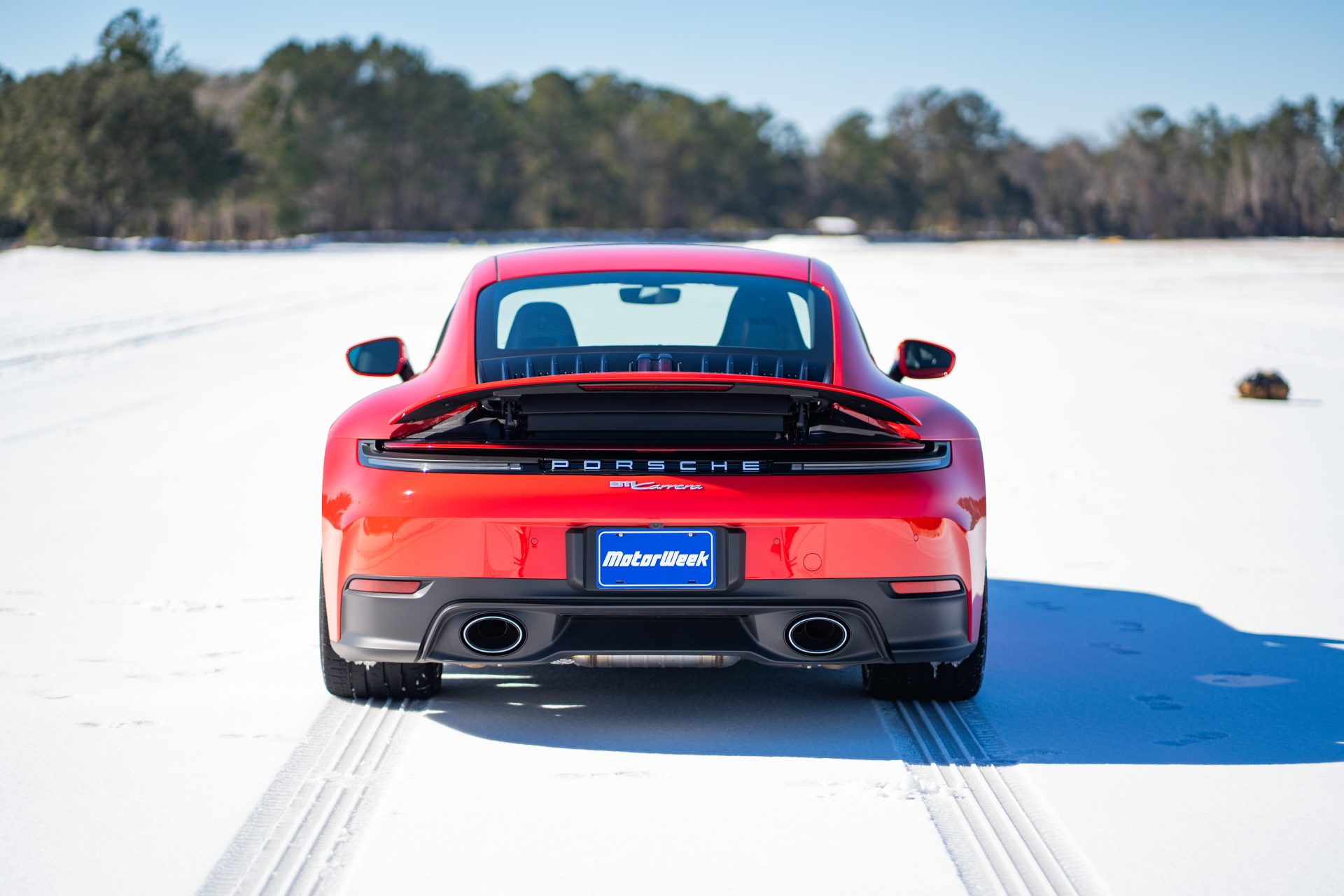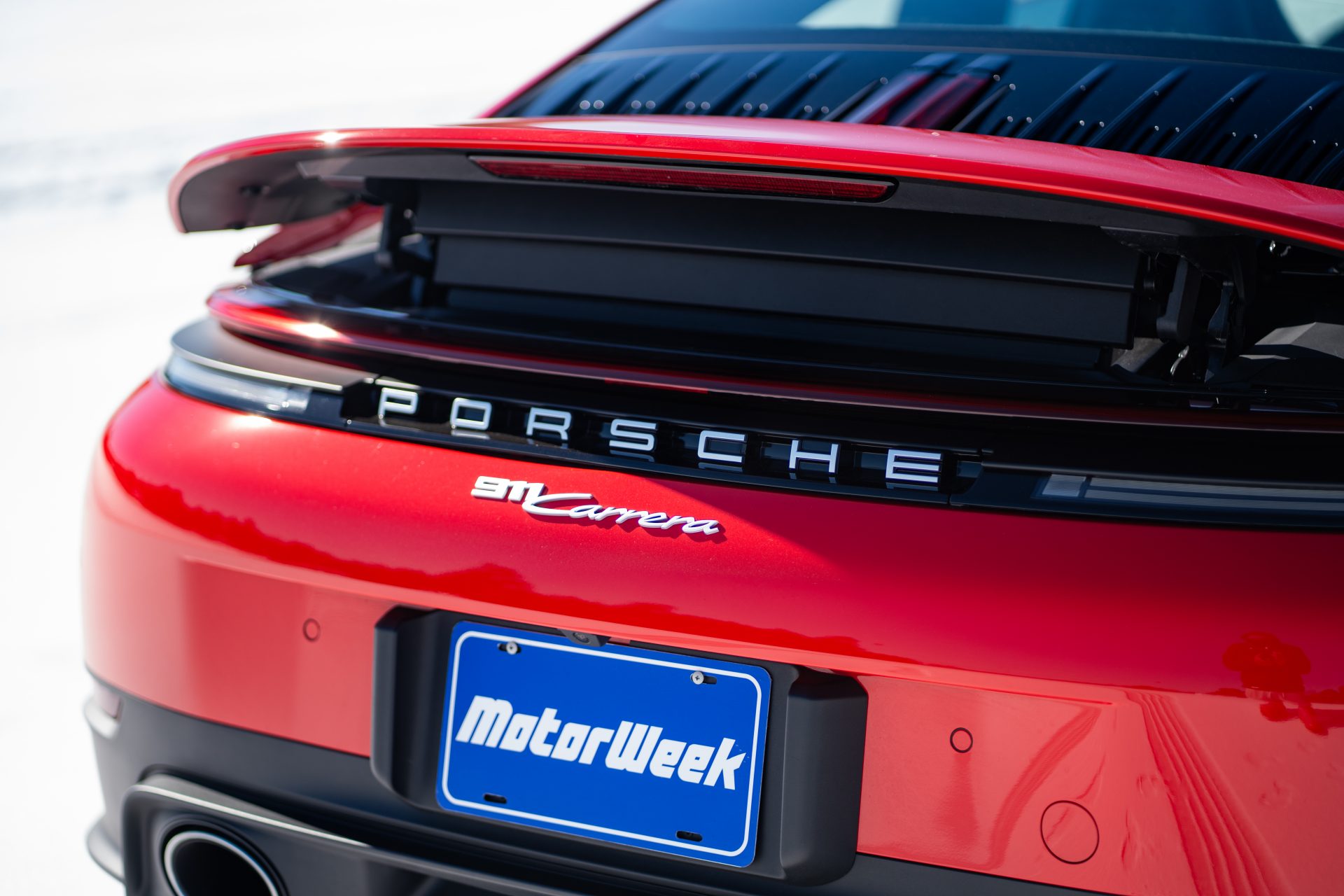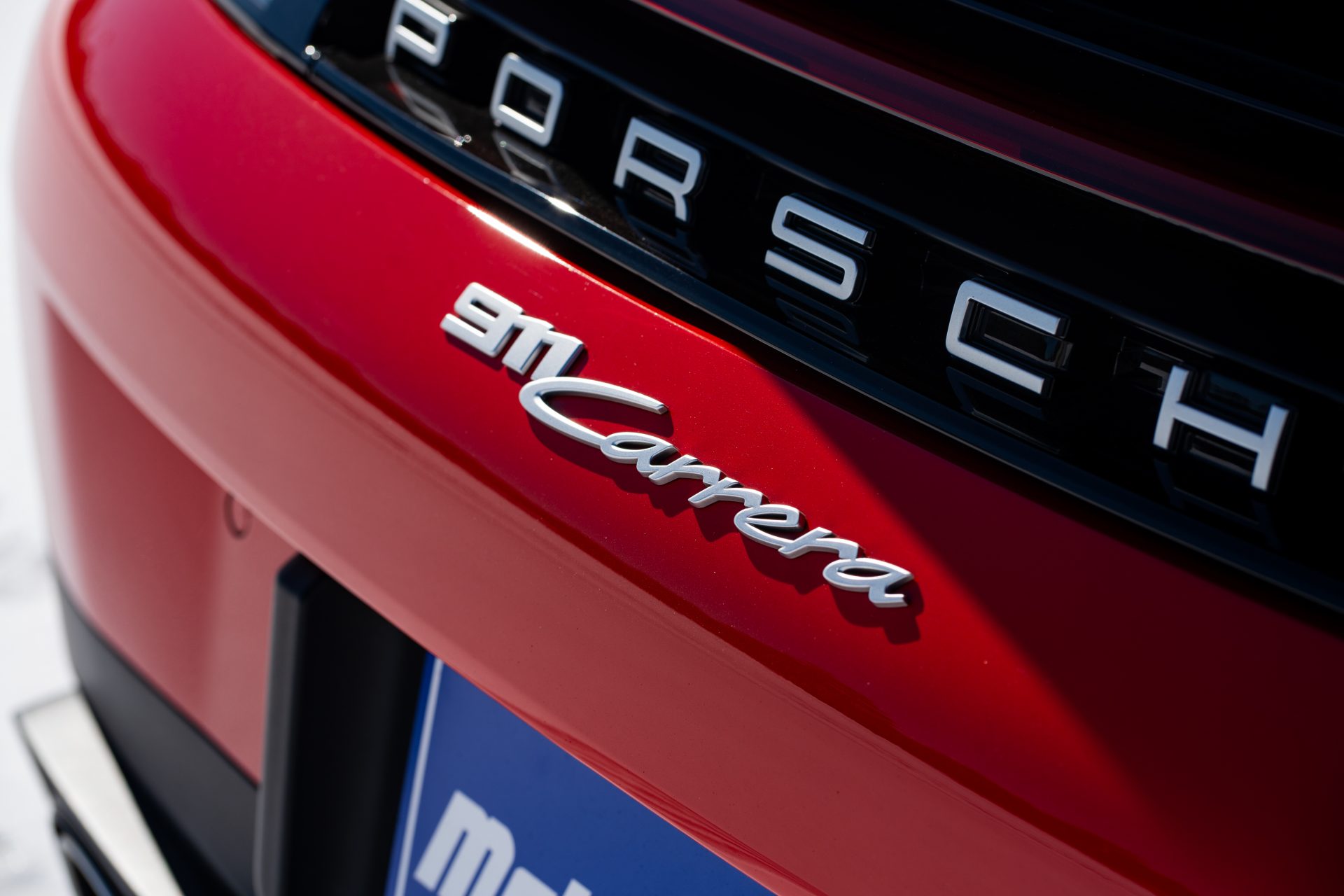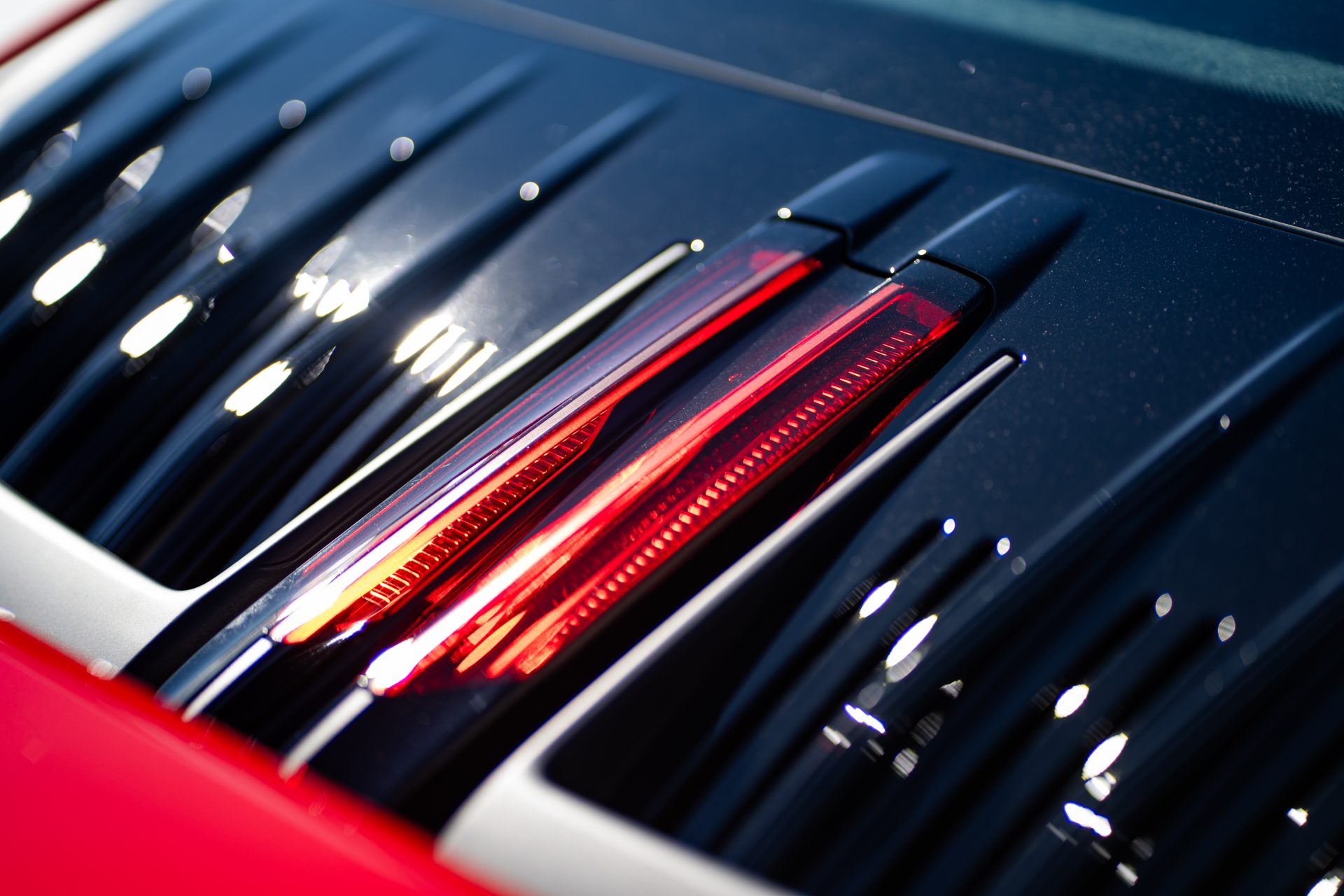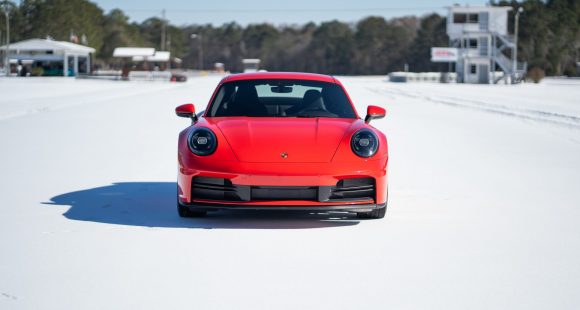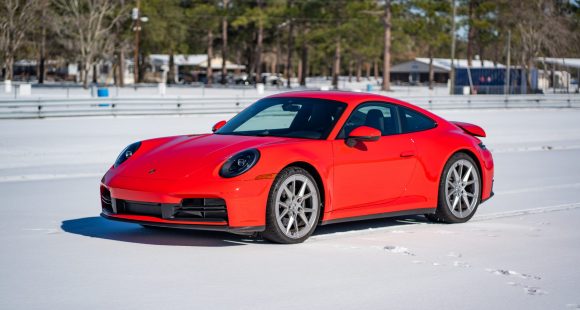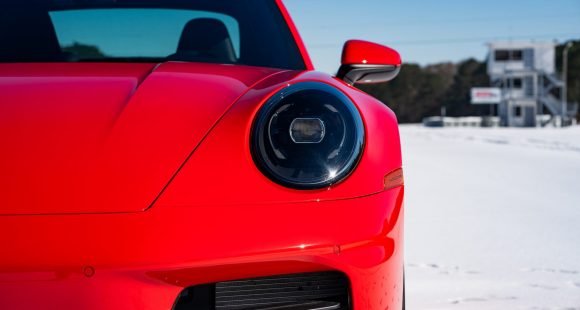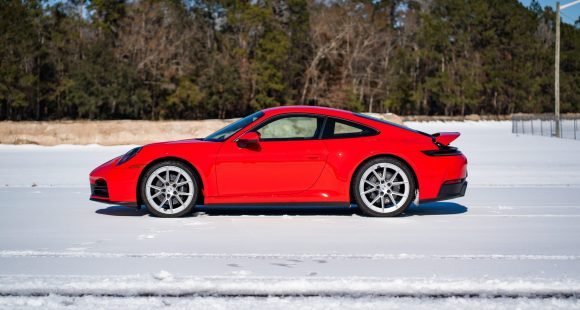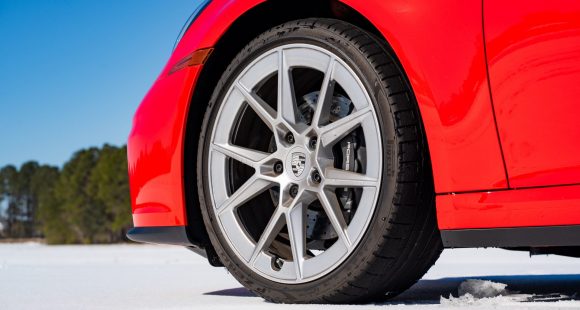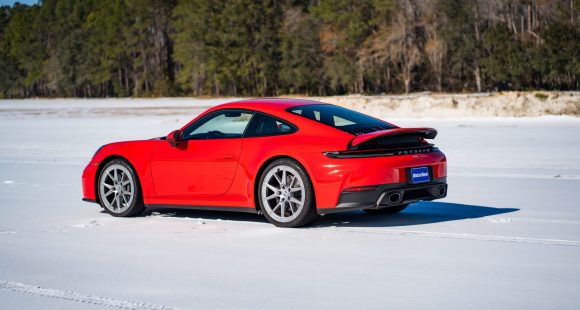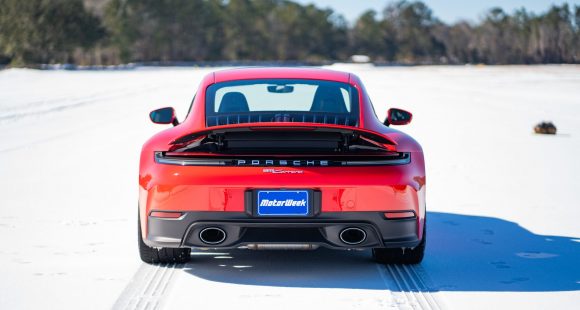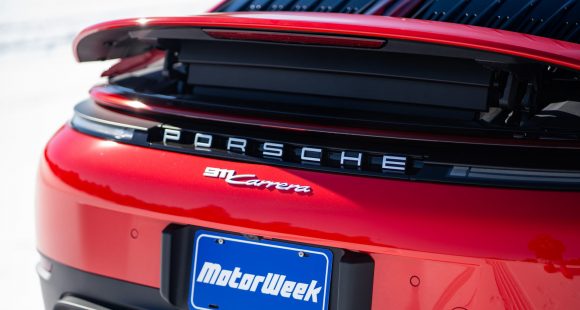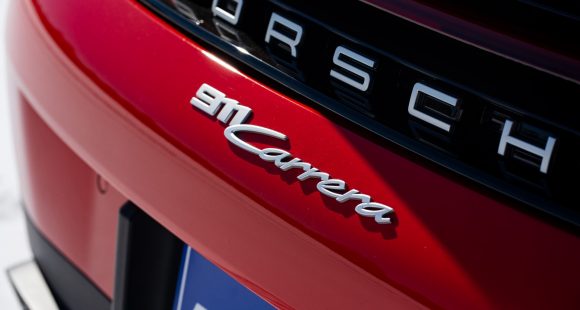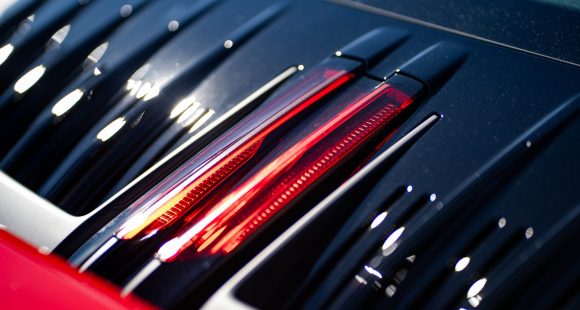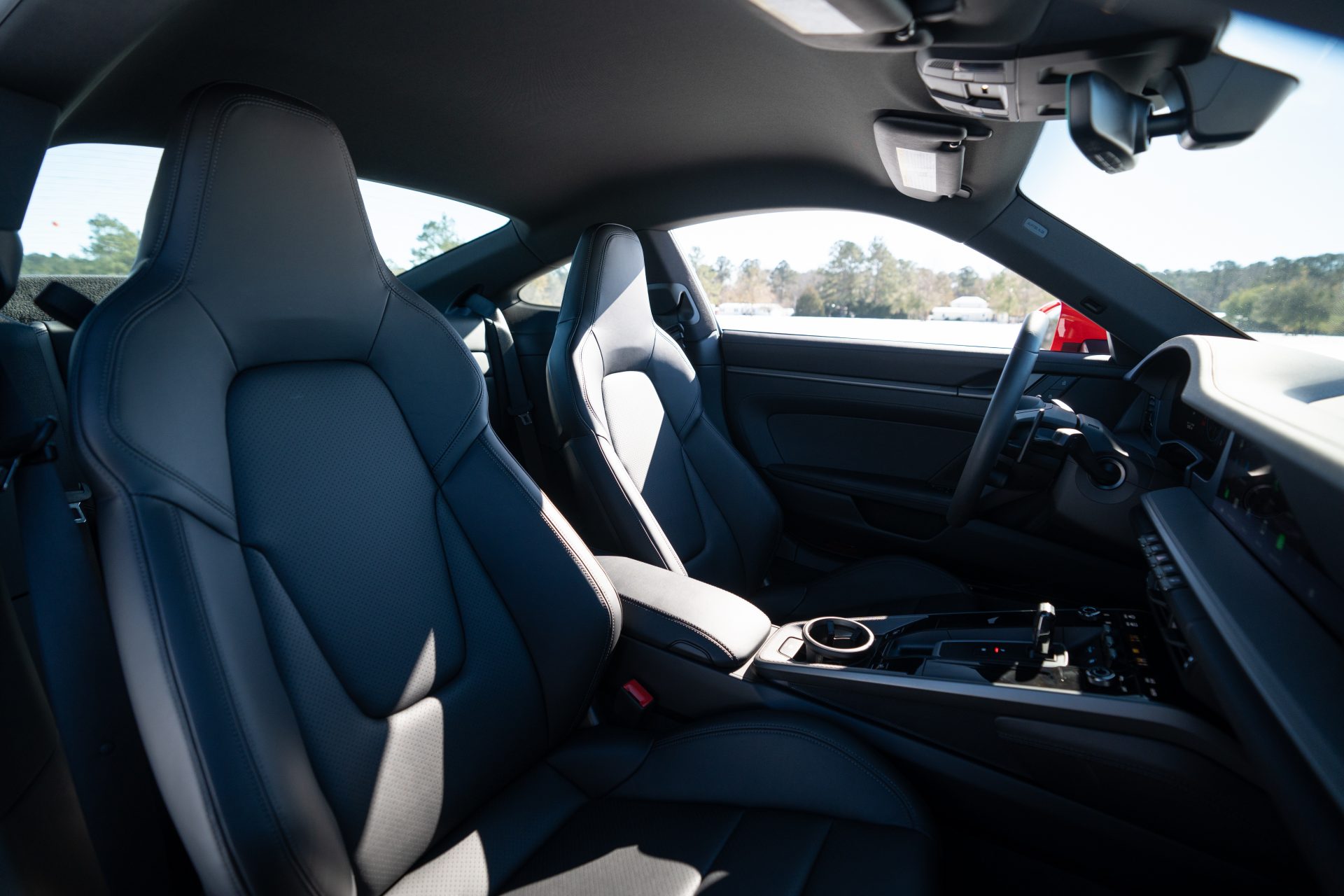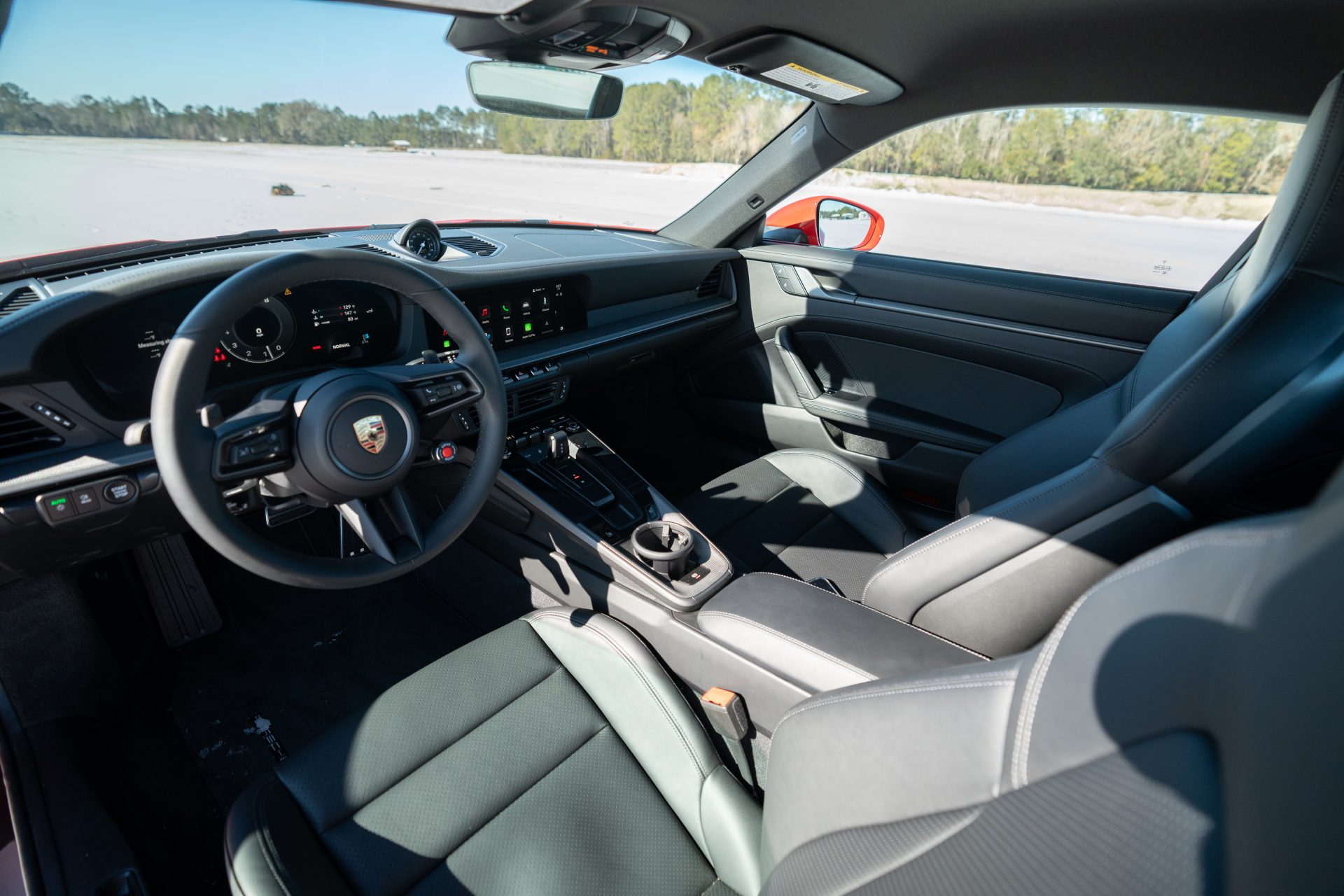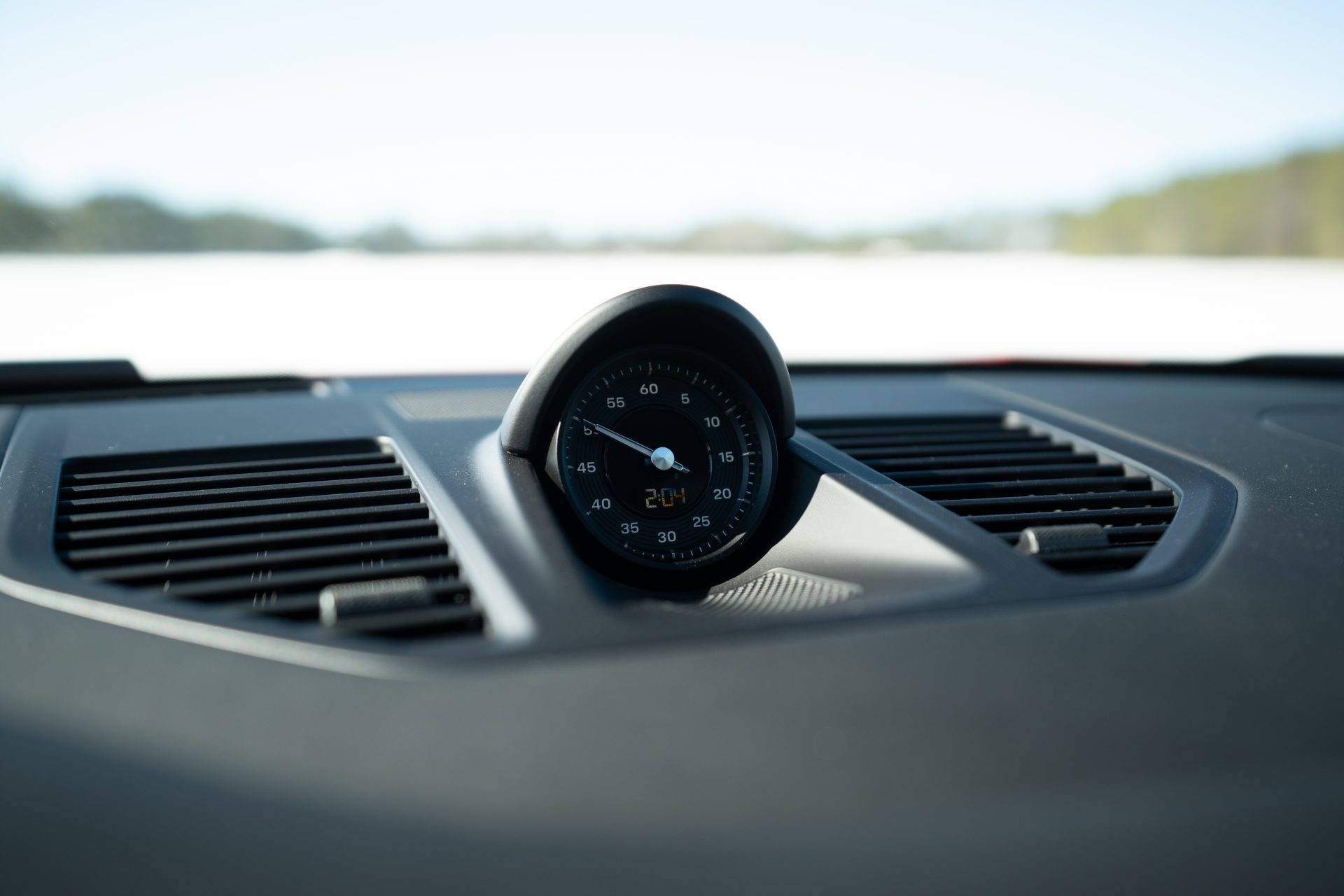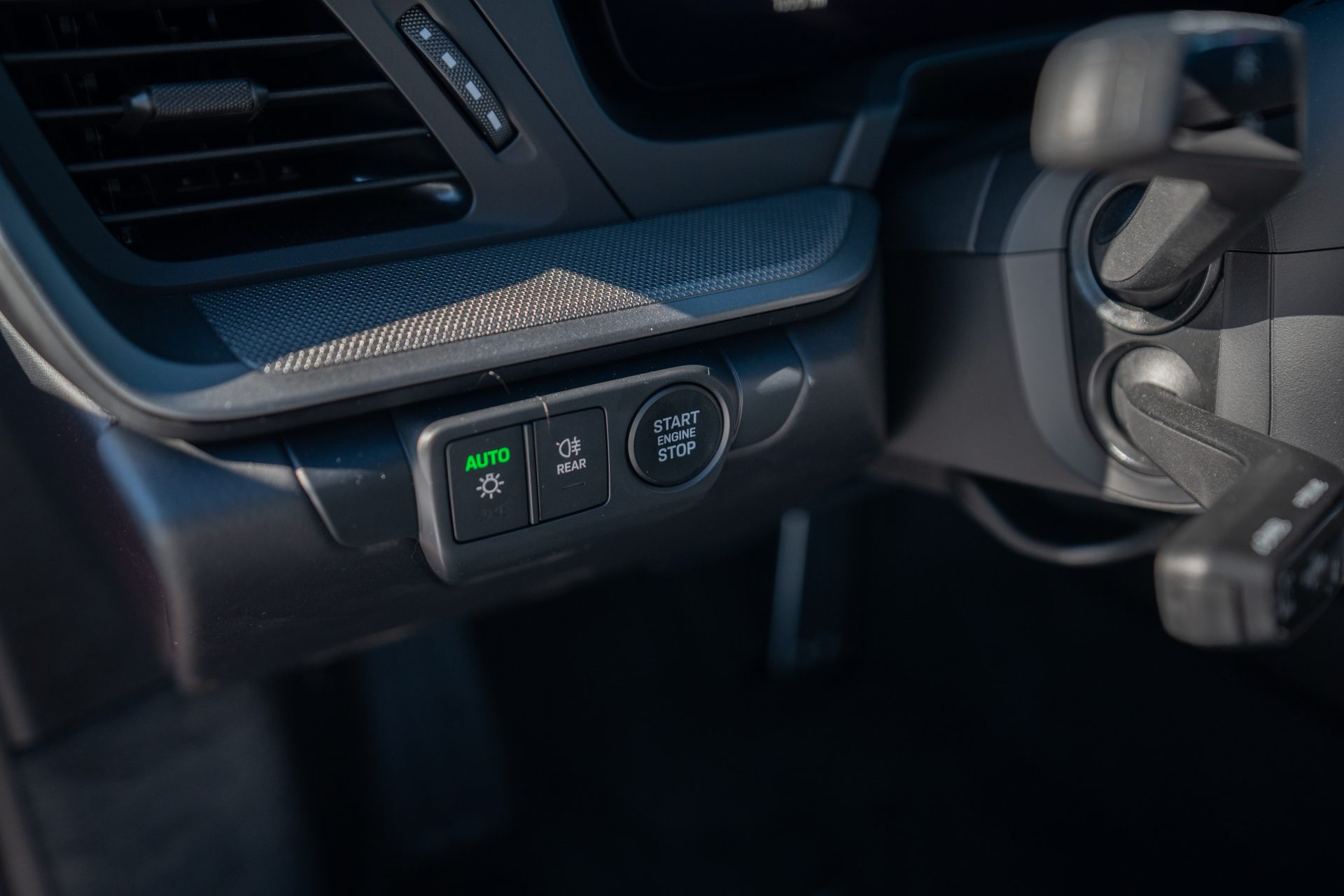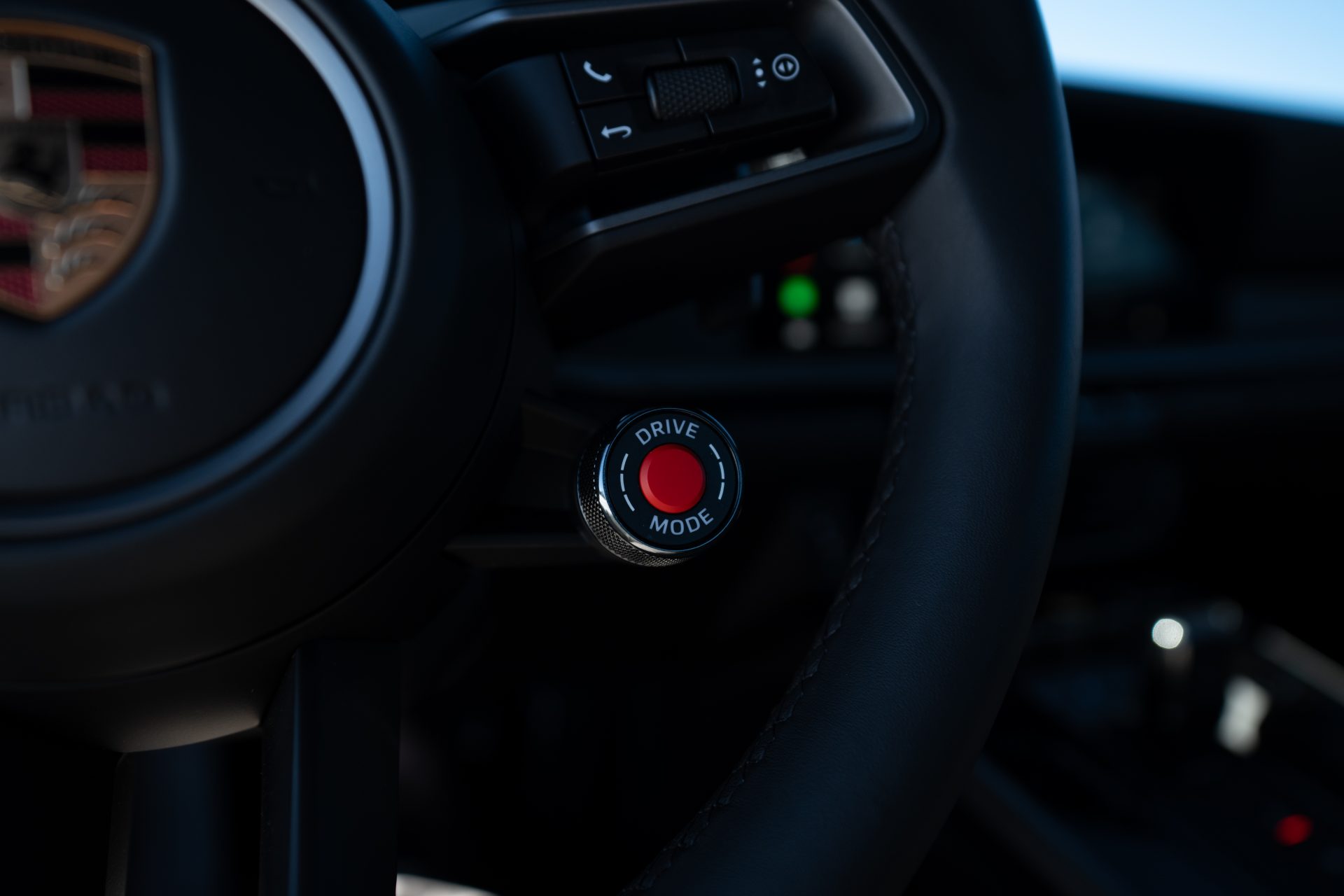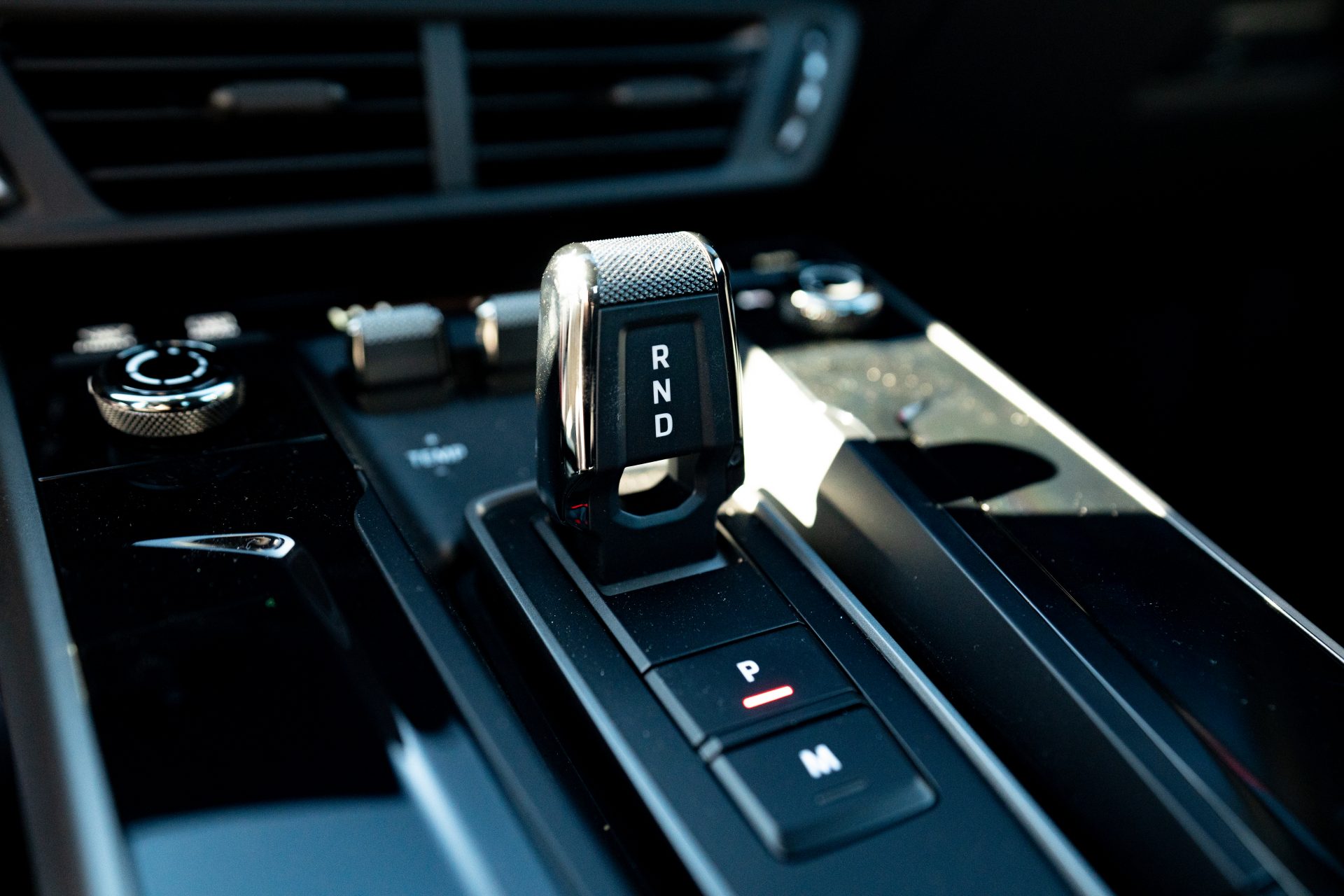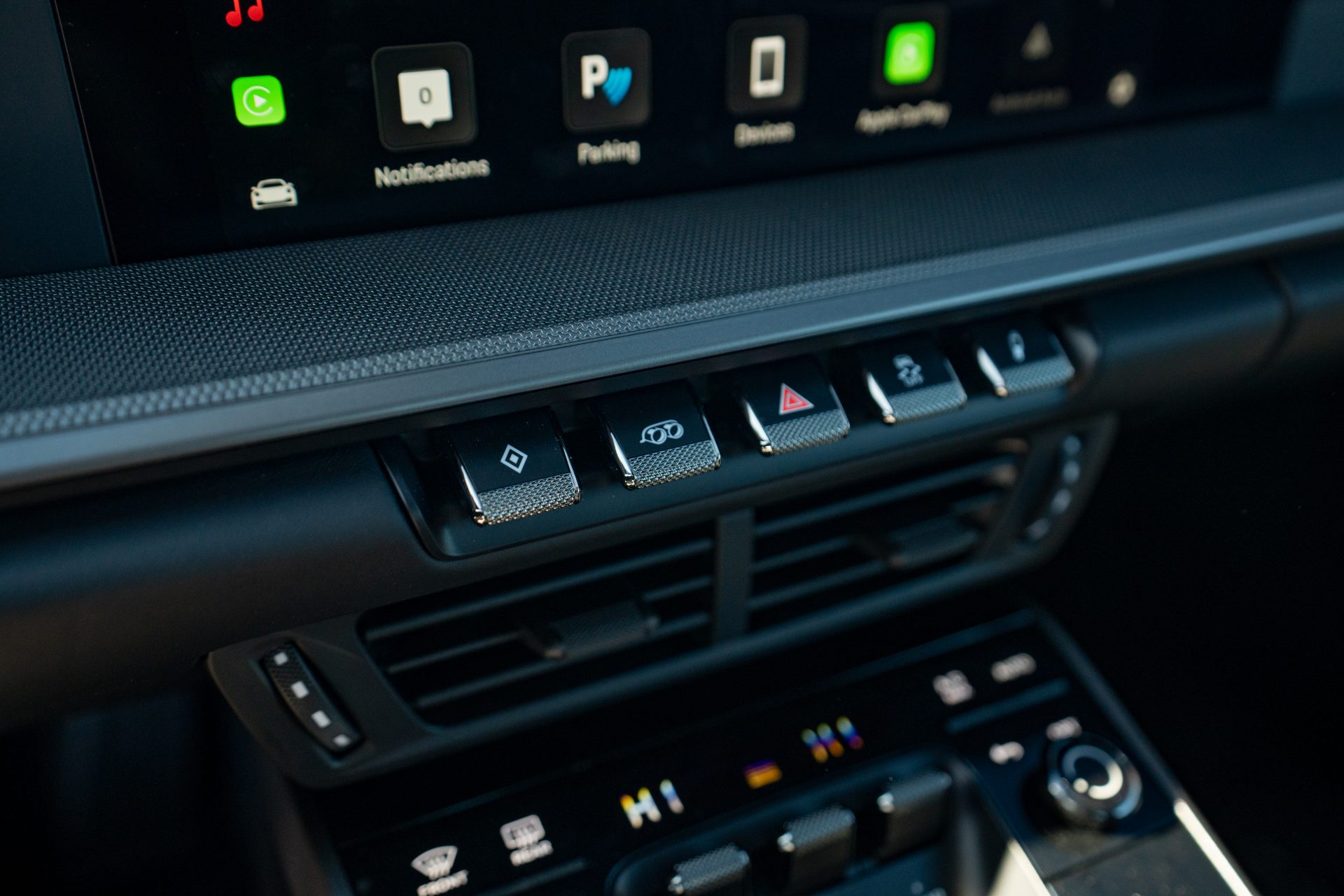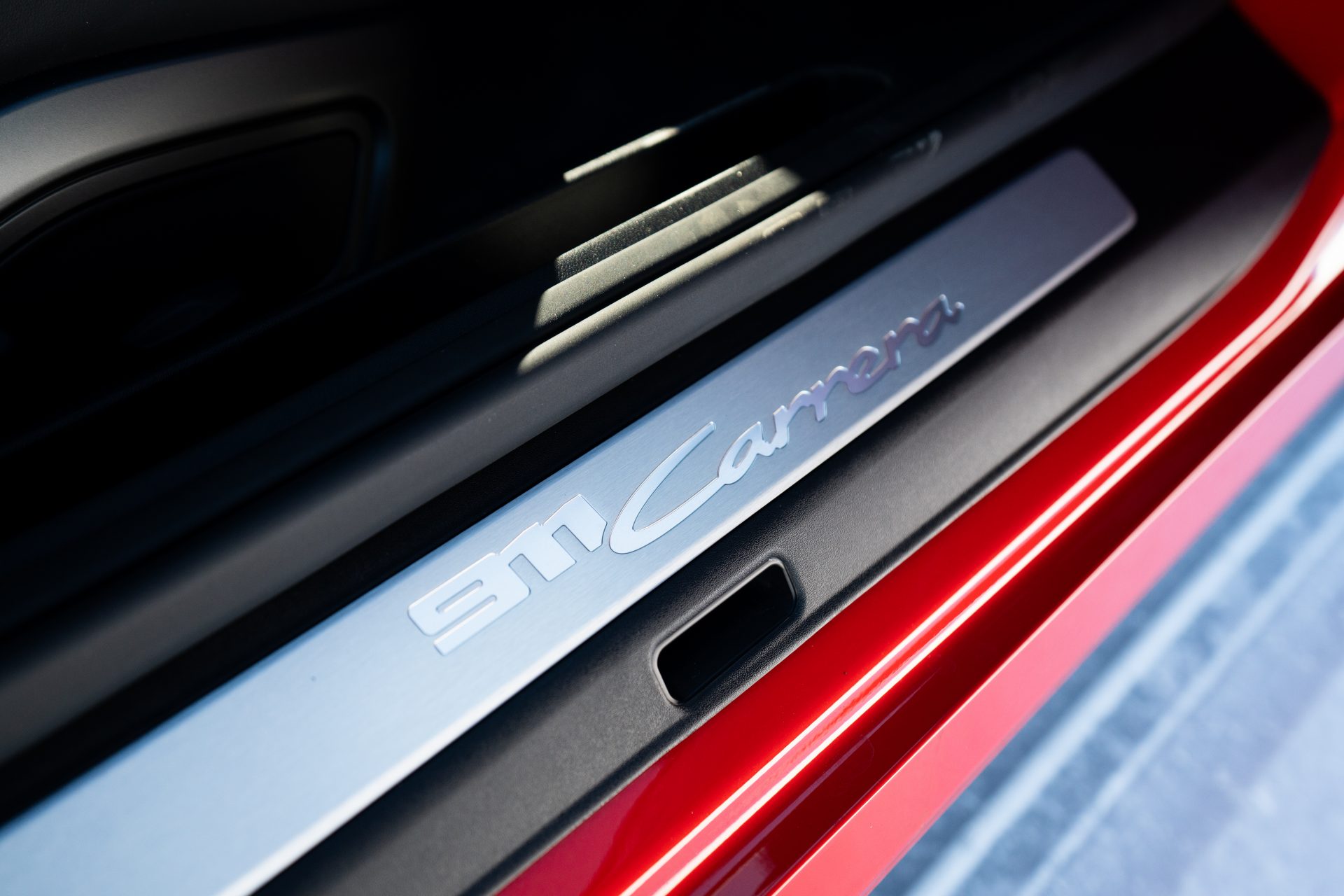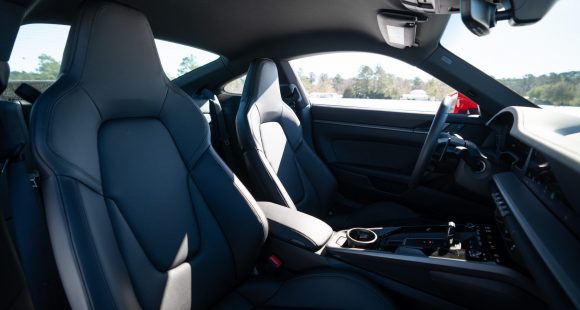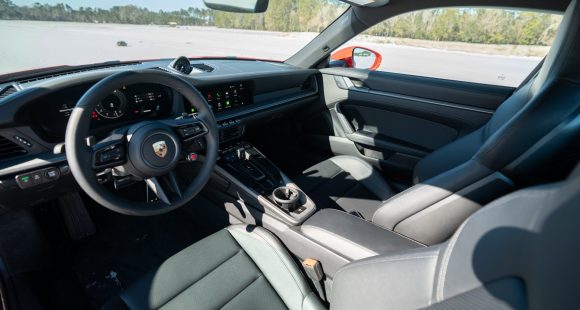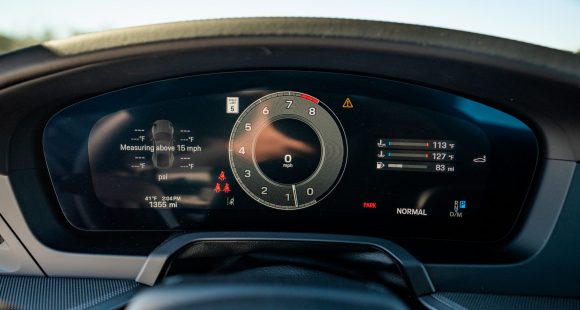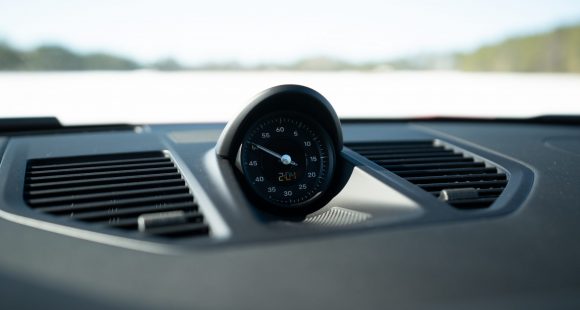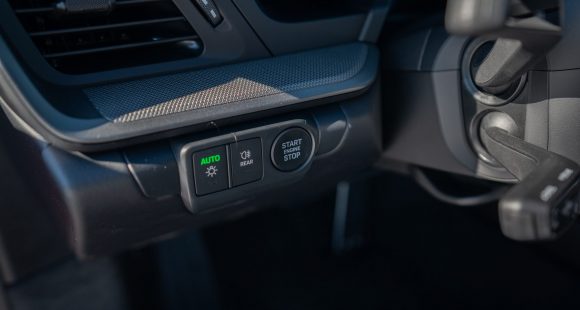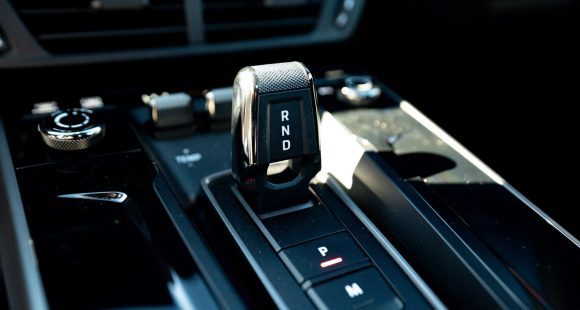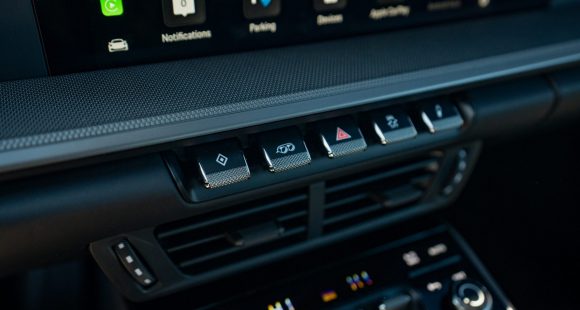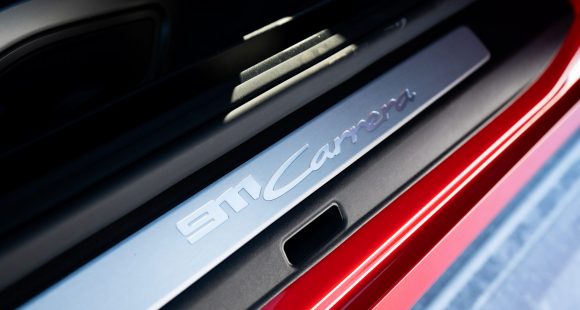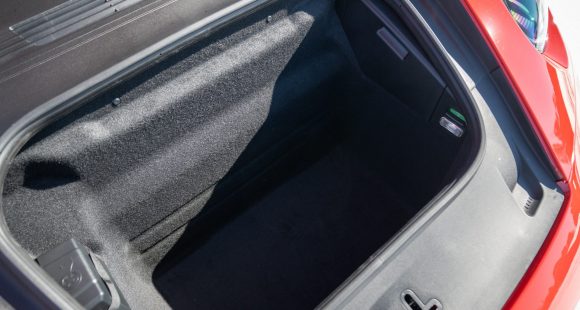2010 Porsche 911 GT3
Back in the late 90s, Porsche set out to make its 996 generation 911 sports car into a bonafide track machine. From that effort emerged the highly revered GT3. In 2006, the GT3 showed up on the latest 997 platform. We said that car delivered the purest razor’s-edge performance of any Porsche we’d driven. Now for 2010, Porsche’s 911 GT3 gets tweaked with more power and a number of corner carving enhancements, all of which make for a racing bloodline that runs stronger than ever.
The ‘wow’ factors of the 2010 Porsche 911 GT3 arrive on all fronts: power, dynamics, and visual cues. As the entire 911 family has just undergone a notable set of revisions, the GT3 got more than its fair share. And since this car is, after all, the road-going variant to Porsche’s GT3 Cup car, bringing it to our winter testing venue, Georgia’s Roebling Road raceway, was a no-brainer.
The new GT3 starts with an expanded 3.8-liter normally aspirated flat-six, now with Variocam technology on both the intake and exhaust valves. Horsepower goes to 435, or 20 more than before, while torque bumps up from 300 to 317. Redline also edges up to a robust 8500.
On its way to a top speed of 194 miles per hour, the rear-engine, rear drive GT3 rockets from 0-to-60 in a faster-than-fast 4.1 seconds. We clocked the quarter mile in 12.2 seconds at 118 miles per hour.
 With a six-speed manual feeding a limited slip differential, this car just hooks up and goes. Power build is strong and the throttle pedal is extremely responsive. Adding to the exhilaration is an exhaust note that is mean and aggressive, at least for a Porsche. Gears are tightly-spaced and the shifter feels machine-precise… one of the best we've ever experienced.
With a six-speed manual feeding a limited slip differential, this car just hooks up and goes. Power build is strong and the throttle pedal is extremely responsive. Adding to the exhilaration is an exhaust note that is mean and aggressive, at least for a Porsche. Gears are tightly-spaced and the shifter feels machine-precise… one of the best we've ever experienced.
As for hitting the turns, the new GT3 exhibits more agility and race track prowess than ever. Porsche Active Suspension Management – with Normal and Sport modes – comes armed with stiffer springs and anti-roll bars. Our car also featured optional Dynamic Engine Mounts, which magnetically tighten up in high-speed driving to form a more solid connection between engine and chassis. The result is a more rigid track car.
There's also newly standard Porsche Stability Management, which replicates the suspension mapping of the venerable GT2. This PSM has the ability to deactivate Stability Control and Traction control separately in individual steps, giving the driver unrestricted control.
Aerodynamics improvements include a doubling of downforce with a redesigned front-end with larger vents, and a new, wider, more steeply tilted rear wing. For even greater stability, the GT3's body height has been lowered by about 30 millimeters. But an optional front axle lifting system allows the front-end to be raised for steep driveways. Lighter 19-inch center-lock wheels wear fat and grippy 235/35s up front, and 305/30s in the rear.
The GT3 is clearly focused on one mission: to deliver outstanding lap times. It is super tight in corners and explosive on every exit, with less twitchiness than we found in the 2007 GT3. Feedback is instantaneous. And even after close to a hundred and fifty laps, our test car never complained, skipped a beat, or even showed signs of wear.
That goes for brakes, too, which have been upgraded over the previous model. Discs are now larger, better ventilated, with an aluminum hub to reduce weight. Stops averaged 121 feet from 60 to zero. For even greater stopping power, buyers can opt for the GT3's very pricey ceramic brakes. Off the track, however, we found the GT3 to be a little too skittish and rigid. Streetability is not—and has never been—this car's strong suit.
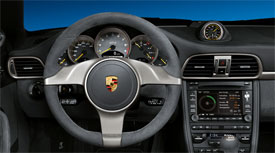 The GT3's new design is equal parts functional and striking. We mentioned the modified front air intakes and the revamped rear wing, which by the way, is marked on either side with a 3.8 to denote the car's new power unit.
The GT3's new design is equal parts functional and striking. We mentioned the modified front air intakes and the revamped rear wing, which by the way, is marked on either side with a 3.8 to denote the car's new power unit.
The new GT3 also wears standard bi-xenon headlights with optional Dynamic Cornering, new LED running, and taillight designs, and restyled bumpers. As before, the center-positioned exhaust pipes mimic those of the Cup Car.
Inside, the GT3 cockpit conforms with the upscale high-performance look of other 911s. As before, there is no back seat. This helps the GT3 retain its previous weight at a trim 3,076 pounds.
What's higher, though, is the base price—by about $8,000. The new GT3 starts at $114,450, which includes a $1,300 gas guzzler tax. We've said it before and we'll say it again… The Porsche 911 GT3 is, without a doubt, one of the track-savviest street legal cars anywhere. And now more than ever. For the purest form of Porsche performance, there is nothing else like it.
Specifications
- Engine: 3.8-Liter Normally Aspirated Flat-six
- Horsepower: 435
- Torque: 317 Lb Feet
- 0-60 MPH: 4.1 Seconds
- 1/4 Mile: 12.2 Seconds @ 118 MPH
- 60-0 MPH: 121 Feet
2025 Porsche 911 Carrera
Ever Evolving 911 Reaches New Heights
The Porsche 911 has existed for 60 years now! Amazing! And, you could argue that major changes over all those years have been relatively few, as constant incremental improvement is more the way that Porsche does business. With that in mind, let’s hit the track in the latest 911 and see what constant improvement means for 2025.
We’ve driven so many 911s here at MotorWeek, each seemingly more special than the last, so it’s a bit refreshing to be ripping around Savannah’s Roebling Road Raceway in a 2025 Porsche 911 that’s about as close as you can get to base these days. And the fact that it’s just as fun as all those exclusive pieces says a lot about how far the 911 has come. Perhaps it also speaks to how much a base 911 will set you back today as well; more on that later.
For now, we’re just thinking about the next apex, holding steady throttle as we approach, and getting on it way sooner than you’d expect without upsetting anything, as the 911 rockets off the corner thanks to tremendous grip and a PDK trans that finds the perfect gear before we even gave it a thought. Even with very cold track temps, we never struggled for grip or battled any wheelspin coming off of corners. And trying to land it in that perfect spot in braking zones is easy with strong brake performance that was predictable and consistent lap after lap; no wandering, and great feedback too.
Yes, even the standard 911 is near pure perfection on a racetrack. It gives you all the right feedback, stays incredibly flat through corners, makes you always feel totally in control, and again is just plain fun. Unless you’re chasing lap times, there’s really no need to head further up the 911 tree. Though it is worth noting the few upgrades that were on our Carrera did help the situation a little. The 20- and 21-inch Carrera S wheels enabled plenty of grip from the 305 Pirelli P Zero tires, the Sport Chrono Package allows 0-60 sprints of 3.7 seconds, an extended range fuel tank meant we could lap all day without having to fill up, and the fantastic Sport Seats provided great support and better comfort than we remember experiencing in a 911. The Sport Exhaust system didn’t add anything to performance, but made things sound a whole lot better, and the oval silver tips look great too.
We never struggled for grip or battled any wheel spin coming off of corners.
Our track time got cut short thanks to a rare snowstorm in Coastal Georgia, but the white stuff and blue sky made the perfect backdrop for our Guards Red Carrera. Exterior tweaks for what is officially the 992.2 include a reshaped front fascia with improved aerodynamics. All front lighting is now contained within the Matrix Design LED headlight housing. The rear fascia has also been smoothed out, the license plate moved higher, and Porsche 3D block lettering spelled out across the back beneath the active rear spoiler and new decklid grille.
Even without Turbo in the name, the standard 911 engine is indeed a turbo these days, a 3.0-liter flat-six twin-turbo delivering 388 horsepower and 331 lb-ft strictly to the rear wheels in the Carrera Coupe.
Inside the cabin, the 911 continues its slow crawl towards the modern, now including a 12.6-inch fully digital gauge display and a start button located on the left side of the steering wheel, with drive modes easily accessible on the wheel itself. In another no brainer move, Porsche now makes the rear seat a no cost option, so you can choose if you want it or not.
Government Fuel Economy Ratings are 18 City, 25 Highway, and 21 Combined. That’s only slightly worse than average for the Energy Impact Score; 14.2 barrels of annual oil consumption with 7.0 tons of CO2 emissions.
The good news is this 911 had the fewest number of options of any Porsche that we’ve tested in some time, and it was still plenty awesome; the bad news is, a base Porsche 911 Carrera Coupe now starts at $122,095.
But can you really put value on “the force,” this mythical power that Porsche seems to have, that somehow turns average drivers into great ones? It’s useless to resist as far as we’re concerned, as it only gets better with the 2025 Porsche 911 Carrera.
Specifications
As Tested
- Engine: 3.0-liter twin-turbo flat-6
- Transmission: 8-speed PDK
- Horsepower: 388
- Torque: 331 lb-ft







